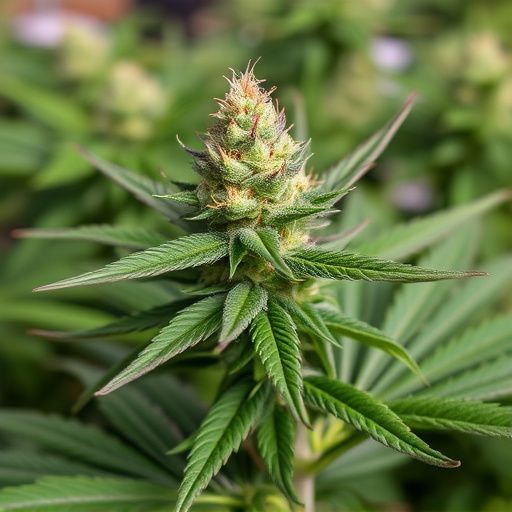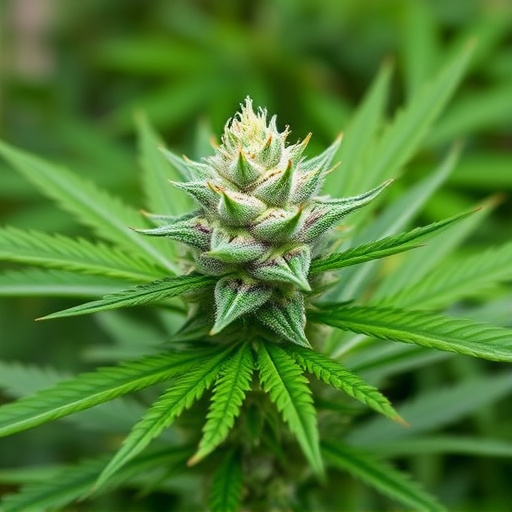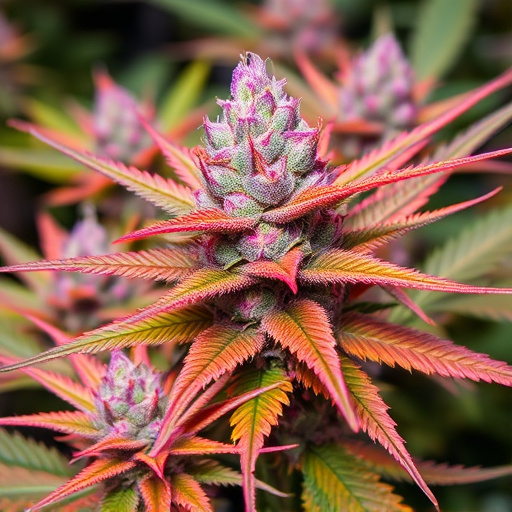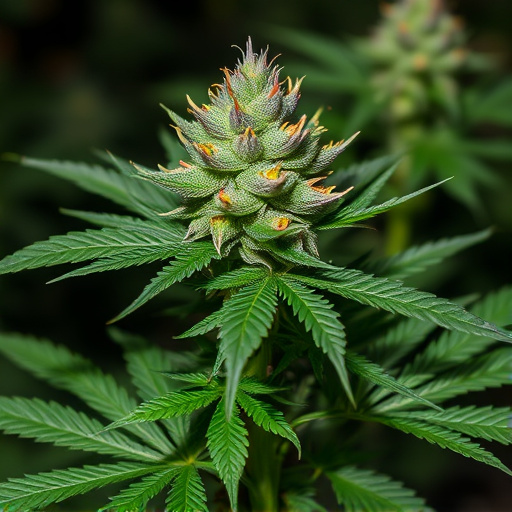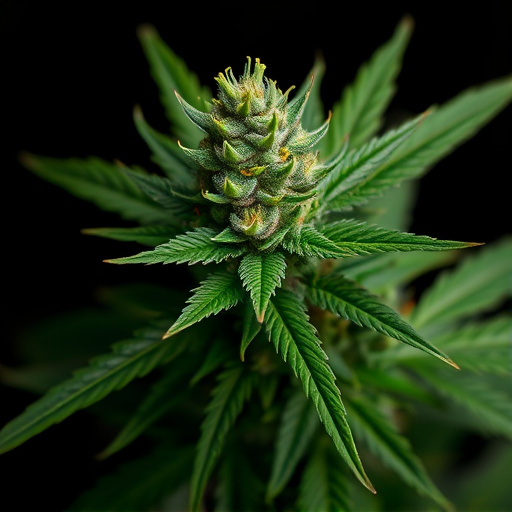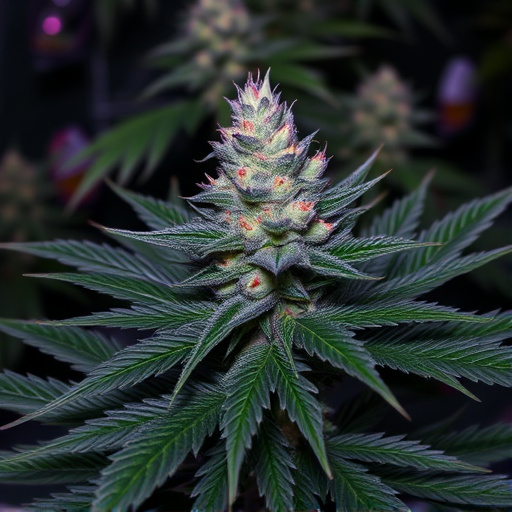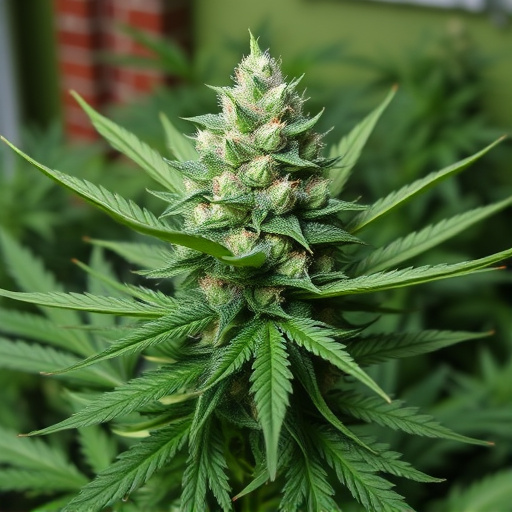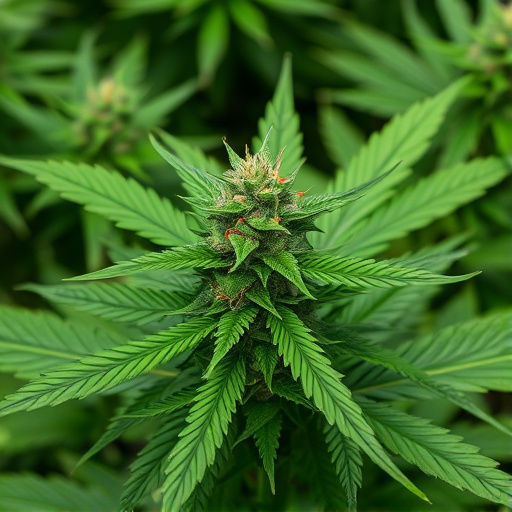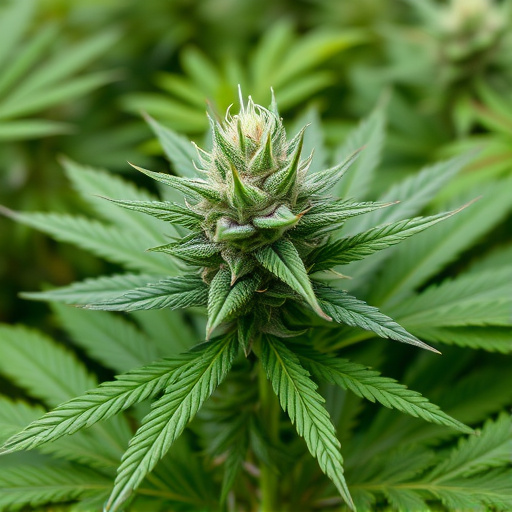Cannabis flowers contain cannabinoids like THC and CBD that interact with the body's endocannabinoid system to regulate pain perception and inflammation. Sativa cannabis strains, high in THC, manage chronic pain through receptor binding and relaxation. CBD-rich strains offer anti-inflammatory benefits without psychoactive effects, making them promising for treating various conditions. Sativa strains have gained popularity as natural alternatives for managing pain, fatigue, and depression, with research showing significant relief from arthritis, fibromyalgia, and neuropathic pain. However, the variability in cannabis composition, dosage, consumption methods, and individual tolerance requires a cautious approach. Further research is needed to fully understand cannabinoid interactions and optimize genetic profiles for maximum pain relief with minimal side effects. Healthcare professionals can use this knowledge to offer personalized guidance.
Cannabis flowers have gained attention for their potential pain-relieving properties, offering a natural alternative for managing chronic conditions. This article explores how understanding cannabis flowers, particularly the role of sativa cannabis strains, can provide effective relief. We delve into scientific research highlighting their active compounds and their impact on mitigating pain. Additionally, safety considerations are discussed to ensure informed use, leaving us with an exciting glimpse into future research directions for these potent sativa cannabis strains in healthcare.
- Understanding Cannabis Flowers and Their Pain-Relieving Properties
- The Role of Sativa Cannabis Strains in Managing Pain
- Safety Considerations and Future Research Directions
Understanding Cannabis Flowers and Their Pain-Relieving Properties
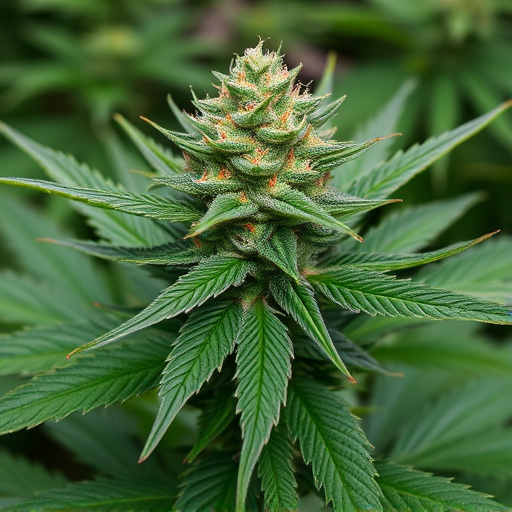
Cannabis flowers, also known as bud or marijuana, contain a diverse range of chemical compounds called cannabinoids, with THC (Tetrahydrocannabinol) and CBD (Cannabidiol) being the most well-known. These cannabinoids interact with our bodies’ endocannabinoid system, which plays a significant role in regulating various physiological processes, including pain perception and inflammation. Understanding how cannabis flowers work with this natural system is key to unlocking their potential for pain relief.
Sativa cannabis strains, known for their invigorating effects, often contain higher levels of THC, which can be effective in managing chronic pain by binding to specific receptors in the body. This interaction can lead to reduced sensation of pain and increased relaxation. On the other hand, CBD-rich strains, commonly associated with their calming properties, may offer anti-inflammatory benefits without the psychoactive effects of THC. Research suggests that CBD can interact with different receptors involved in the perception of pain, making it a promising compound for managing various types of chronic conditions.
The Role of Sativa Cannabis Strains in Managing Pain
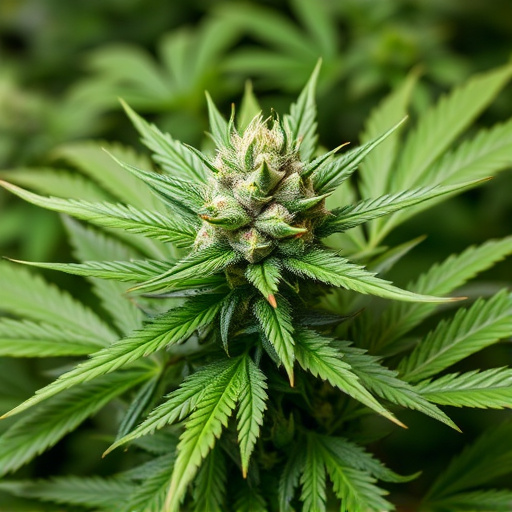
Sativa cannabis strains have gained recognition for their potential in managing pain, offering a natural alternative to traditional medications. These strains are known for their uplifting and energizing effects, which can be beneficial for individuals dealing with chronic pain that causes fatigue or depression. The active compounds in sativa plants, particularly THC (tetrahydrocannabinol) and CBD (cannabidiol), interact with the body’s endocannabinoid system to reduce inflammation and block pain signals.
Research suggests that specific sativa cannabis strains can provide significant relief for various types of pain, including arthritis, fibromyalgia, and neuropathic pain. The ability of sativa to stimulate dopamine production in the brain also contributes to its pain-relieving properties by enhancing mood and reducing discomfort associated with chronic conditions. Additionally, many users find that the mental clarity and focus induced by sativa strains help them manage pain more effectively throughout their daily routines.
Safety Considerations and Future Research Directions
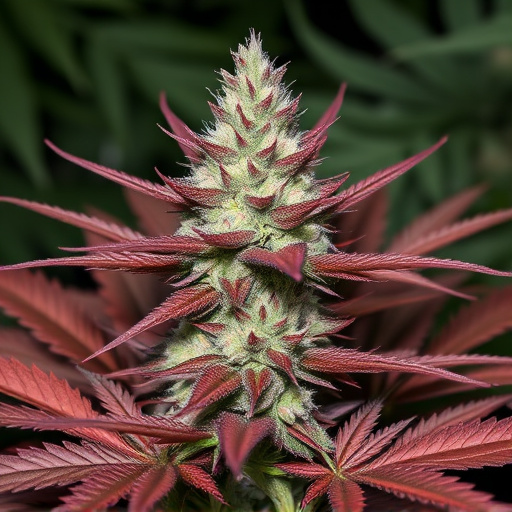
While cannabis has shown promise in pain management, it’s crucial to approach its use with safety considerations in mind. The effectiveness and safety of using cannabis for pain relief depend on various factors, including the specific chemical composition of the plant material, dosage, method of consumption, and individual tolerance. Additionally, not all cannabis strains are created equal; sativa cannabis strains, known for their uplifting effects, may differ significantly from indica strains in terms of cannabinoid profiles and pain-relieving properties.
Future research is needed to fully understand the complex interplay between cannabinoids like THC and CBD, and their impact on different types of pain. More studies comparing various sativa cannabis strains could help identify specific genetic profiles that offer optimal pain relief with minimal side effects. As knowledge expands, healthcare professionals can provide more personalized guidance, ensuring patients receive the best treatment options while mitigating potential risks associated with cannabis use.
Cannabis flower’s ability to alleviate pain, particularly through specific sativa cannabis strains, offers a promising alternative for those seeking natural relief. While further research is needed to fully understand its mechanisms and safety, the current evidence highlights the potential of these natural compounds in managing chronic conditions. Exploring the unique properties of different sativa cannabis strains may lead to personalized treatment options, providing much-needed solace for individuals navigating pain management journeys.
